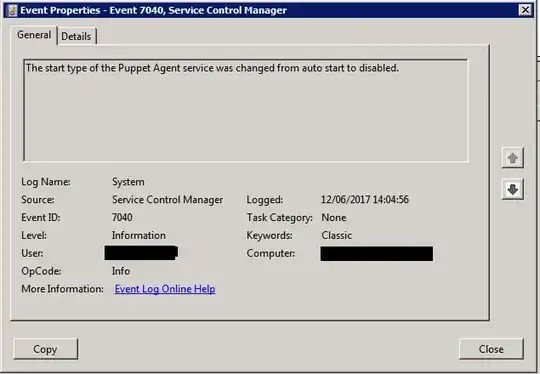I was doing some fault finding, and I've discovered two services which should be set to automatic have been set to disabled.
What is the best way to find out who did this? It could be someone from my company, or it could be someone client-side. It would be enough to determine the user account.
I've had a look in the Windows Event Viewer, but, to be honest, I'm not sure what I'm looking for, and there is a lot to work through. Nothing has jumped out at me, but I suspect it's just that I don't know what I'm looking for.
